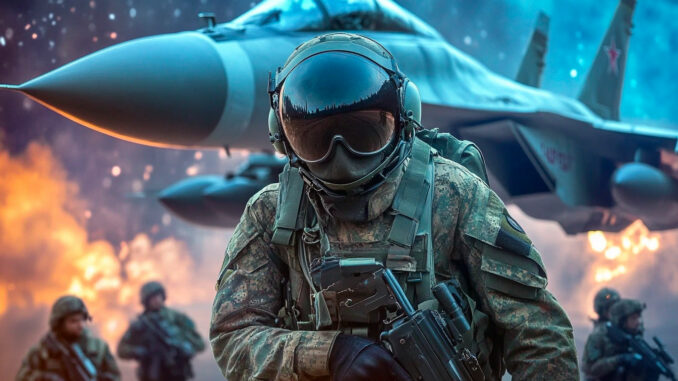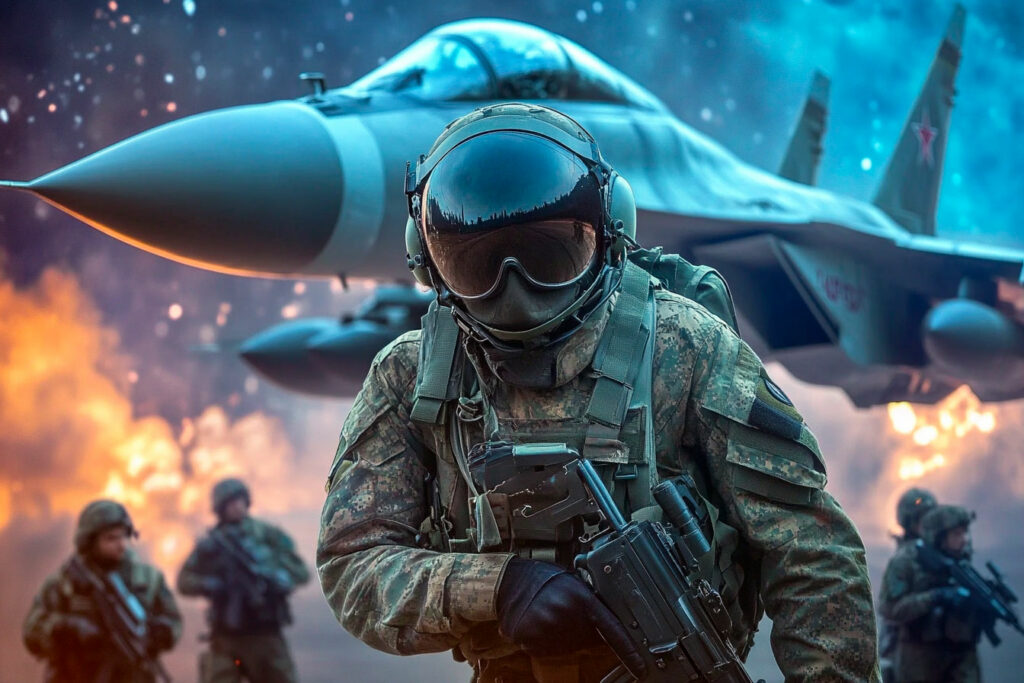
The integration of cutting-edge technologies such as artificial intelligence (AI), drones, and next-generation missiles has become a defining characteristic of modern military strategies around the globe. Russia, a leading nation in military capabilities, has made stark advancements to maintain its edge in global defence. From incorporating AI-driven tactical systems to deploying advanced capabilities like the Tsirkon hypersonic missile, the nation is redefining the rules of modern warfare.
This blog will explore how Russia is weaving these technologies into its broader defence strategy, shedding light on the means, impacts, and outcomes of its approach.
Russia’s Reliance on Emerging Technologies for Warfare
Russia’s defence planners have long understood the significance of technological superiority on both traditional and hybrid battlefields. By investing heavily in innovations like autonomous systems and advanced missile technology, Moscow aims to bolster its military capabilities to counterbalance the West’s technological ascendancy.
Artificial Intelligence in Military Applications
AI has become one of the most critical levers for improving decision-making and battlefield outcomes. Russia is primarily utilising AI in three key areas of its defence strategy:
- Decision Making and Battlefield Data Analysis
AI systems are employed to process massive volumes of battlefield data in real-time, providing commanders with actionable intelligence. Russia’s “Era” military innovation technopolis near the Black Sea serves as an incubator for such advancements, integrating AI into operational procedures to enhance the country’s observation and response times.
- Autonomous Combat Systems
Russia is actively pushing its capabilities in autonomous technology. For example, the Uran-9, an unmanned ground combat vehicle (UGCV), is equipped with advanced weaponry and sensors. Designed for high-risk urban combat, it can operate semi-independently, reducing the exposure of soldiers in hostile environments.
- Electronic Warfare (EW)
AI in electronic warfare underpins Russia’s ability to degrade or neutralise enemy communications and weapon systems. With AI aiding EW capabilities, systems like Krasukha-4 have become more efficient at disrupting radar and airborne signals.
Drone Advancement in Tactical and Strategic Operations
Unmanned aerial vehicles (UAVs) or drones represent another critical area of Russia’s defence modernisation. Going beyond surveillance, Russian drones are increasingly designed to execute combat roles, ensuring adaptability on dynamic battlefields.
- Loitering Munitions
Systems like the Lancet drone have blurred the line between surveillance and precision strikes. Dubbed “kamikaze drones,” these have been deployed in active theatres, efficiently targeting strategic enemy points such as artillery positions.
- Air Defence Overwatch
Drones are now complementing Russia’s advanced integrated air defence systems (IADS), such as the S-400 and S-500. UAVs extend the range of detection for incoming aerial threats, enhancing overall strategic coverage.
- Improved Battlefield Cooperation
Russia embraces swarm drone technology, aiming to develop fully networked swarms capable of overwhelming enemy defences. Working in coordination with AI systems, swarms promise improved adaptability against adversaries with advanced counter-measures.

Next-Generation Missiles and the ‘Tsirkon’ Hypersonic Missile
Russia’s development of advanced missile technology exemplifies its ambition to dominate next-generation warfare. Among its flagship projects is the Tsirkon hypersonic missile, which has attracted significant global attention.
- Precision and Speed of Hypersonic Missiles
Tsirkon missiles can reach speeds up to Mach 9, making them nearly impossible to intercept using conventional missile defence systems. These missiles not only enhance naval strike capabilities but also serve as critical tools for power projection in strategically contested areas like the Arctic and the Black Sea.
- Integration of AI for Targeting
Beyond sheer speed, missiles like Tsirkon utilise AI-driven guidance systems to refine their targeting accuracy. This capability makes them exceptionally effective against both stationary and manoeuvring targets, introducing a new dimension to military deterrence.
- Balance of Geopolitical Power
The Tsirkon and similar missile technologies are viewed as game-changers in geopolitical standoffs. By investing in battle-ready hypersonic platforms, Russia aims to offset NATO’s conventional weaponry supremacy while asserting its influence on the global stage.
The Impact on Global Security and Military Balance
Russia’s rapid adaptation of these crucial technologies is having a significant ripple effect globally.
Regional and Global Strategic Impacts
- Arms Race
Russia’s advancements are fuelling an arms race in advanced military technology. Nations such as the United States and China are making concurrent investments in autonomous systems, hypersonic missiles, and AI warfare platforms to maintain parity or gain an edge.
- Escalation of Hybrid Warfare
Russia’s use of AI and electronic warfare has broadened the scope of hybrid warfare strategies, encompassing cyber-physical dimensions that destabilise adversaries without engaging in direct conflict.
- Impact on Arms Control and Diplomacy
These advancements challenge existing arms control frameworks, creating loopholes that intensify tension among nations. Hypersonic missiles like Tsirkon, for instance, evade traditional treaty limitations, raising serious concerns regarding global stability.
Internal Challenges and Limitations
Despite Russia’s achievements, there are noteworthy challenges limiting its defence modernisation efforts.
- Sanctions and Economic Strain
Western sanctions on microchip imports and core technologies hinder Russia’s ability to scale its AI and missile production capacities. This has led to a reliance on indigenous innovation and partnerships with nations like China.
- Field Reliability Issues
Systems like the Uran-9 UGCV have exhibited operational shortcomings in live combat scenarios, including weak armour and communication delays, questioning the maturity of certain AI-driven weapon systems.
- Budget Constraints
Unlike the U.S. and China, Russia’s defence spending accounts for far less of its GDP, compelling it to make strategic trade-offs in its investment directions.
The Path Forward for Russian Defence Tech
Russia’s integration of technologies like AI, drones, and hypersonic missiles signifies a pivotal shift in defence strategies, giving the country a competitive edge in certain domains. However, significant hurdles in technology scaling, economic sanctions, and operational reliability indicate that these advancements may not yet represent invincible capabilities.
For global security analysts and military enthusiasts, understanding these developments provides insight into the evolving dynamics of power projection in the 21st century. From hypersonic power on the seas to drone-driven warfare, Russia’s focus on innovation underscores the critical need for vigilance in response strategies by other global powers.
War Wings Daily is an independant magazine.